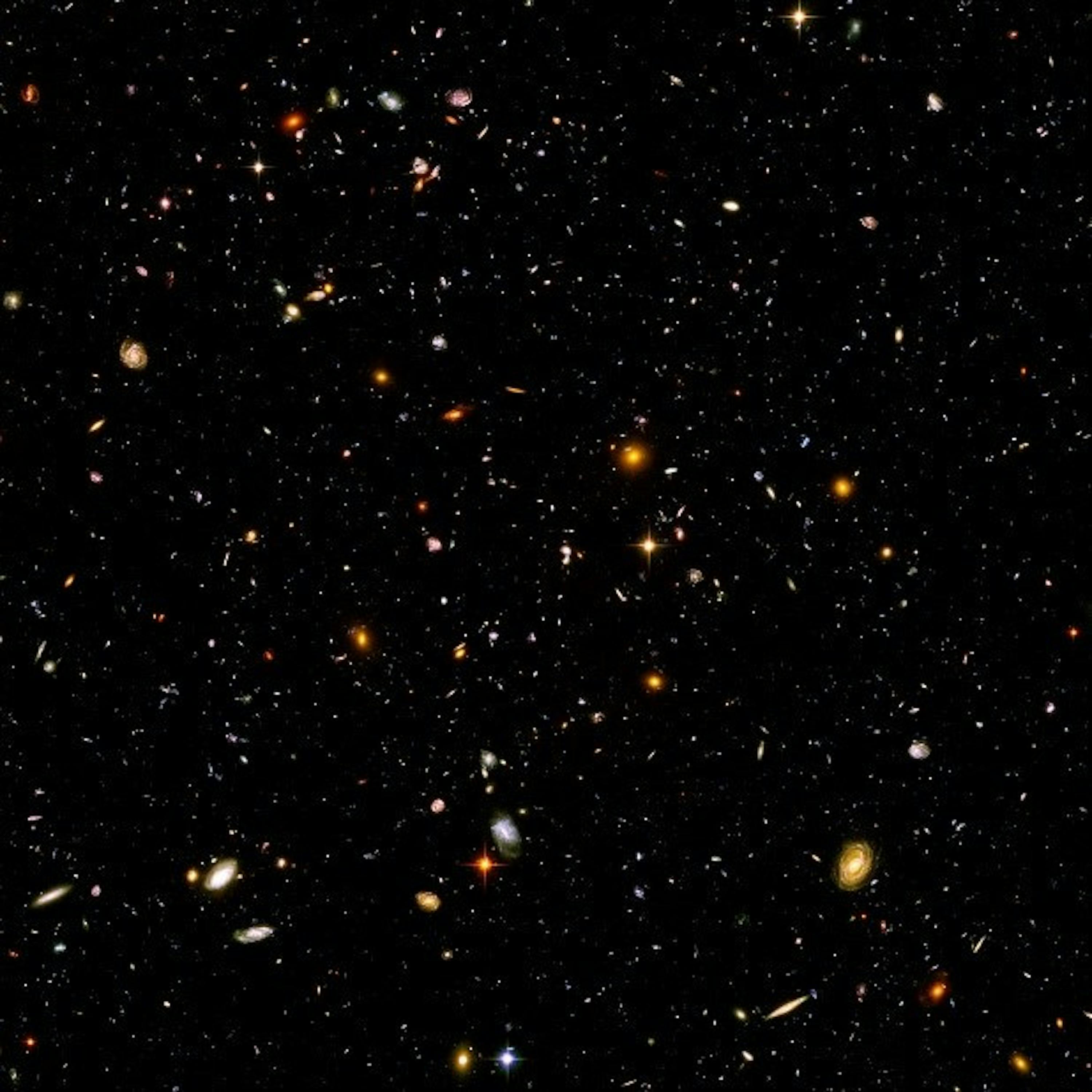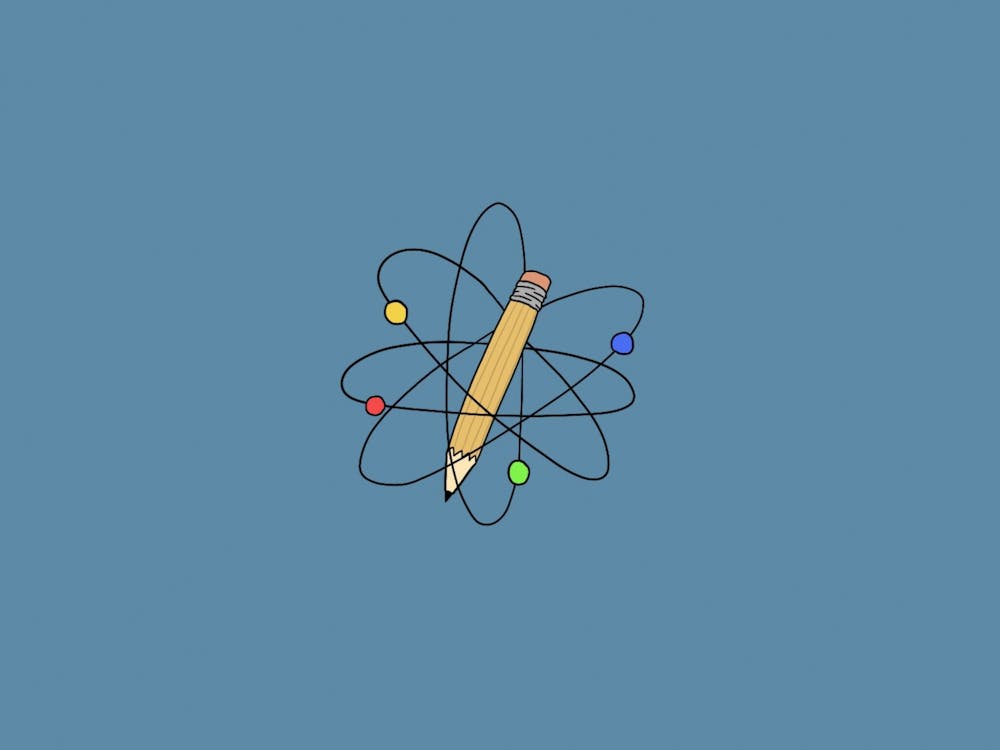It was a consideration of the intersection between the humanities and sciences as Nobel Laureate and Bloomberg Distinguished Professor Adam Riess from the Department of Physics and Astronomy took the stage with former U.K. Poet Laureate Andrew Motion, a professor in The Writing Seminars.
Department of Classics Professor Karen ní Mheallaigh moderated the dialogue, in which Riess and Motion detailed the intertwining notions of math and language and how they interact and fit with another in a society tending toward science, technology, engineering and mathematics (STEM). As disparate as the fields may seem, Riess and Motion argued, in reality, they act in synchrony as a vehicle for both scientific communication and poetic interpretation.

The discussion celebrated the upcoming launch of the James Webb Space Telescope (JWST), an undertaking over two decades and $10 billion in the making. It succeeds the Hubble Space Telescope, which was first launched in 1990 and has since served as the preeminent telescope for viewing the distant horizons of space.
The Hubble Space Telescope is positioned a mere 250,000 miles above Earth; JWST, in contrast, will sit at the Sun-Earth L2 Lagrange Point 750,000 miles above the Earth. JWST is packed with sensors and spectrographs that will fuel deep-space imaging for the National Aeronautics and Space Administration (NASA) for at least the next decade.
But that isn’t the only new feature. The distance at which JWST is placed from the Earth lets it see with a clarity no other telescope can rival; it’s now possible to image distant galaxies in never-before-seen detail. Telescopic shuttering can be used to view galaxies from the past, with JWST able to study galaxies forming just 100 million years after the Big Bang.
Dr. Riess explained that, by viewing primordial objects that represent the very building blocks of the universe, we can answer an array of questions concerning the birth of space and everything within it.
“The telescope is a time machine,” said Dr. Riess.
But how then, do these cosmological studies and scientific viscera coordinate with poetry, with the fine arts and manipulation of language? Professor Motion emphasized that poetry is a way to express feelings that prose cannot. At the same time, poetry provides an avenue from which one can explore new frontiers of the human condition.
“We write to shape order from chaos,” Professor Motion said.
And what is more chaotic than space, the endless arrays of stars and solar systems above, through which we look to understand our future and past alike? The uncertainty of space is what brings physicists and poets together to make better sense of the final frontier.
For Riess, little in science can be done without collaboration. He pointed to an anecdote he often shares with students.
“Imagine being a housefly who lives for just 24 hours in a world, and trying to understand everything about it, in just 24 hours, not being able to travel any farther than say, the corner of one room,“ Riess said. “How you would have to use your tools and imagination to explore as much as you can, but eventually, you’d have to rely on the generations of flies before you to make any sort of progress.”
Professor Motion agreed, and said that they were reminded of T.S Eliot’s essay Tradition and the Individual Talent.
“When we are reading a text, if it is any good, it is going to be informed by all sorts of previous artistic experiences and influences,” Motion said.
At first glance, Motion and Riess seemed to be suggesting that the role of physics was the generation of knowledge, while poetry was to communicate this knowledge. When asked about how the two might interact beyond this, Motion answered with a question of his own: why are the two fields so polarized in the first place?
Motion talked of the English poet John Keats, who believed that science, with its elucidations of the world and its physical properties, actually stifled the imagination. Motion disagreed with this notion, remarking upon how seeing the pictures of the galaxies above only heightened his connection to the arts.
“When I lie on the grass and stare up at the sky, knowing the questions raised have scientific answers, I think my sense of their mysteriousness is only deepened,” Motion said.
Riess offered his own take on the divide, wondering how many hundreds of years ago it began that scientists took everything with degrees of literality not seen in the fine arts, out of a requirement to interpret data that relies on mathematical equations and concepts set in stone from centuries of experimentation.
“Out of necessity, [science] has gone to this extremely reductionist language of extreme precision, but then so much is lost when you’re the listener, and you don’t have choices anymore,” Riess said.
The event ended with a poem, prepared specially by Motion. It was a piece on the night of the moon landing, the night he spent with his mother looking up at the moon.
“He put his eye to the telescope, and the telescope swallowed him whole,” he said.





